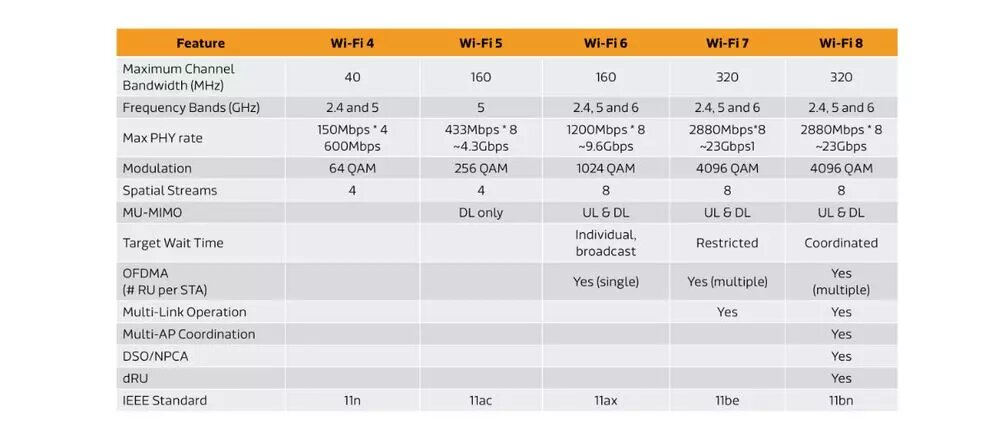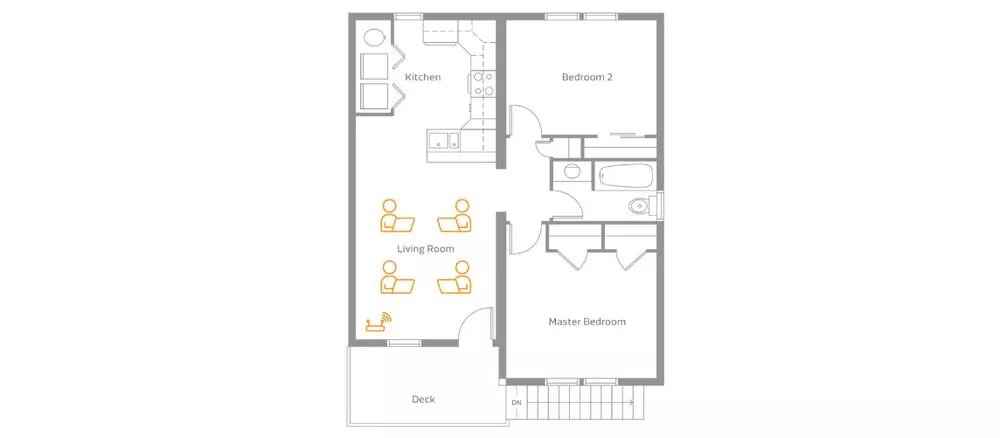Experts are already working on developing the WiFi 8 standard, a connection that will become the norm in a few years and will continue to increase the capacity of our connections even further. Now we are discovering what the main objective of a connectivity will be in which a sacrifice will be made in relation to speed.
WiFi is something we use every day and is of crucial importance to people all over the world. But the truth is that WiFi advances are less talked about than, for example, 4G or 5G mobile networks. Of course, this does not mean that WiFi will not also evolve and receive new versions. The next one will be WiFi 8 and its debut is expected to take place in 2028. It is already in development.
Clear objectives
The Wi-Fi Alliance and MediaTek team are working behind closed doors to make the next evolution of Wi-Fi deliver a significant improvement. However, they already say that they are very clear about what their goals are going to be. And one of them is not related to speed. The reason for this is that they have already achieved sufficiently solid speed performance and, in this next version, they want to concentrate their energy on other aspects.

Of course, this doesn't mean that WiFi 8 will be a step backwards compared to the current version. But we can expect that this next version of WiFi, which is fully named IEEE 802.11bn Ultra High Reliability, will remain exactly the same speed as WiFi 7. And that is an indication that it will continue in the range of 23Gbits/s or 2,880Mbps x 8. Therefore, the great improvement that there was when going from WiFi 6 to WiFi 7 will be maintained, which was an evolution that was marked by the change in speed performance. But, this time, that aspect will remain stable. There will be no change in speed, but the jump from WiFi 7 to WiFi 8 will mean an improvement in other aspects. For now, experts believe that it is the most appropriate for the WiFi connection to continue evolving.
A different generational leap
MediaTek has revealed some of the details of what we can expect from WiFi 8 before its launch in 2028. It is possible, based on what is being said, that we will not find out much more about this next generation of WiFi until its launch, so it is worth analysing what we do know. For example, China has been defined as the main country in terms of the development of WiFi 8 and not the United States as might have been previously imagined.
The reason for this is the huge number of Internet accesses in the country, with 650 million broadband users and an average connection speed of 487.6 Mbps, which represents a significant growth of 18% compared to 2023. Also, as we said, the WiFi 8 connection will be very similar to the current WiFi 7, also repeating the four frequency bands that it will use: 2, 4, 5 and 6GHz. This lack of changes will not, in any case, be a problem. The reason for this is that the development of WiFi 8 is focusing on perfecting the way in which the devices in our home, both the computer and the mobile, will interact with different access points. With the current versions of WiFi there are different problems that prevent the devices from getting the best out of the connections, so work is being done to improve it. One of the ways they are doing this is by fine-tuning Co-SR (Coordinated Spatial Reuse) technology, which will be used in WiFi 8 to allow different access points to communicate with each other. This will make the connection more robust and there will be fewer interruptions.

Along the same lines, work is also being done on Co-BF systems and the use of dynamic subchannels. Improvements and the implementation of changes in this technology will be noticeable in specific situations. For example, if there are different devices connected to the same WiFi, with WiFi 8 the system will be able to deduce which terminals can download the same file at a faster speed than the rest and will give them more bandwidth to do so. In addition, problems in which WiFi does not act at its maximum level on a device when it is very close to another terminal connected to the same connection will also be eliminated. Communication between access points will act efficiently and will resolve these types of previous limitations.
In addition, work is being done on other aspects that, in general, will have the same objective: to increase the stability of WiFi 8 so that the experience obtained is more efficient. There will not be greater speed, but in practice it is most likely that we will notice a significant improvement in its use. Of course, we must be patient, since we were talking about 2028 and, in the end, we cannot rule out that it will end up arriving later. The regulation and approval of these WiFi standards is not fast in view of how WiFi 7 802.11be has not even been approved yet when it was thought that it would be something that would be solved months ago.





